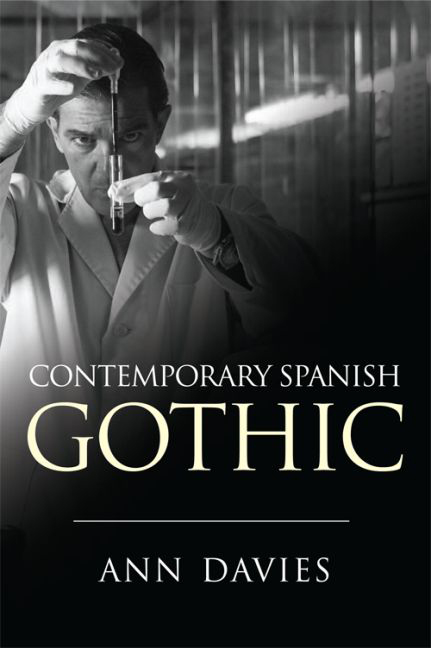Book contents
- Frontmatter
- Contents
- List of Figures
- Acknowledgements
- 1 Introduction
- 2 Heritage Gothic: Goya Biopics
- 3 The Gothic Bestseller: The Circulation of Excess
- 4 The Gothic House: Problematising the National Space
- 5 The Gothic Camera: Javier Aguirresarobe at Home and in Hollywood
- 6 Gothic Medicine: Written on the Body
- 7 Conclusion
- Filmography
- Bibliography
- Index
7 - Conclusion
Published online by Cambridge University Press: 27 April 2017
- Frontmatter
- Contents
- List of Figures
- Acknowledgements
- 1 Introduction
- 2 Heritage Gothic: Goya Biopics
- 3 The Gothic Bestseller: The Circulation of Excess
- 4 The Gothic House: Problematising the National Space
- 5 The Gothic Camera: Javier Aguirresarobe at Home and in Hollywood
- 6 Gothic Medicine: Written on the Body
- 7 Conclusion
- Filmography
- Bibliography
- Index
Summary
In a recent talk, the Gothic scholar Lucie Armitt spoke of the Gothic as inherently about crossing points (Armitt 2016). The occasion was a symposium at my home institution of the University of Stirling to celebrate the opening of an archive relating to the author Patrick McGrath. I attended the symposium primarily to listen and to support colleagues, and found myself fascinated by the insights of speakers on McGrath and the Gothic more widely. Some speakers were fully immersed in Gothic scholarship but others came from different disciplines and sometimes apologised for the fact, as if they were trespassers. Armitt's own paper came at the end of the day, and I believe her remarks might help us understand that the Gothic is not so much all-pervasive but a nexus in which subjects, themes and disciplines might intersect; for, in a world where universities promote interdisciplinary research, the Gothic is more interdisciplinary than most. It positively invites trespass. As Armitt says, the Gothic crosses lines, including those of academic disciplines. McGrath himself suggests: ‘The idea of the “real man” – or the “true self” or the “essential identity” – has no validity in the Gothic. The Gothic recognizes the fluidity, the multiplicity, the contingency of identity’ (McGrath 1997, 156).
Armitt and McGrath's ideas suggest a different approach to the Gothic, one that counters the fears of other Gothicists that the Gothic is reduced to ever-circulating simulacra. It also suggests a different approach to the fear of trespassing arising from other disciplines. There is no essential identity but that is not to say identity does not exist at all. The idea of circulation, which I have addressed in this book, is fluid but it is also contingent, originating and/or travelling through a particular place and time, the crossing of lines to which Armitt referred, the nexus which I have been talking about throughout this study. Or it travels through a particular discipline, so that each informs the other. These metaphors, I hope, demonstrate the value of the Gothic for Spanish studies, and the value of Spanish studies for the Gothic.
- Type
- Chapter
- Information
- Contemporary Spanish Gothic , pp. 170 - 175Publisher: Edinburgh University PressPrint publication year: 2016



